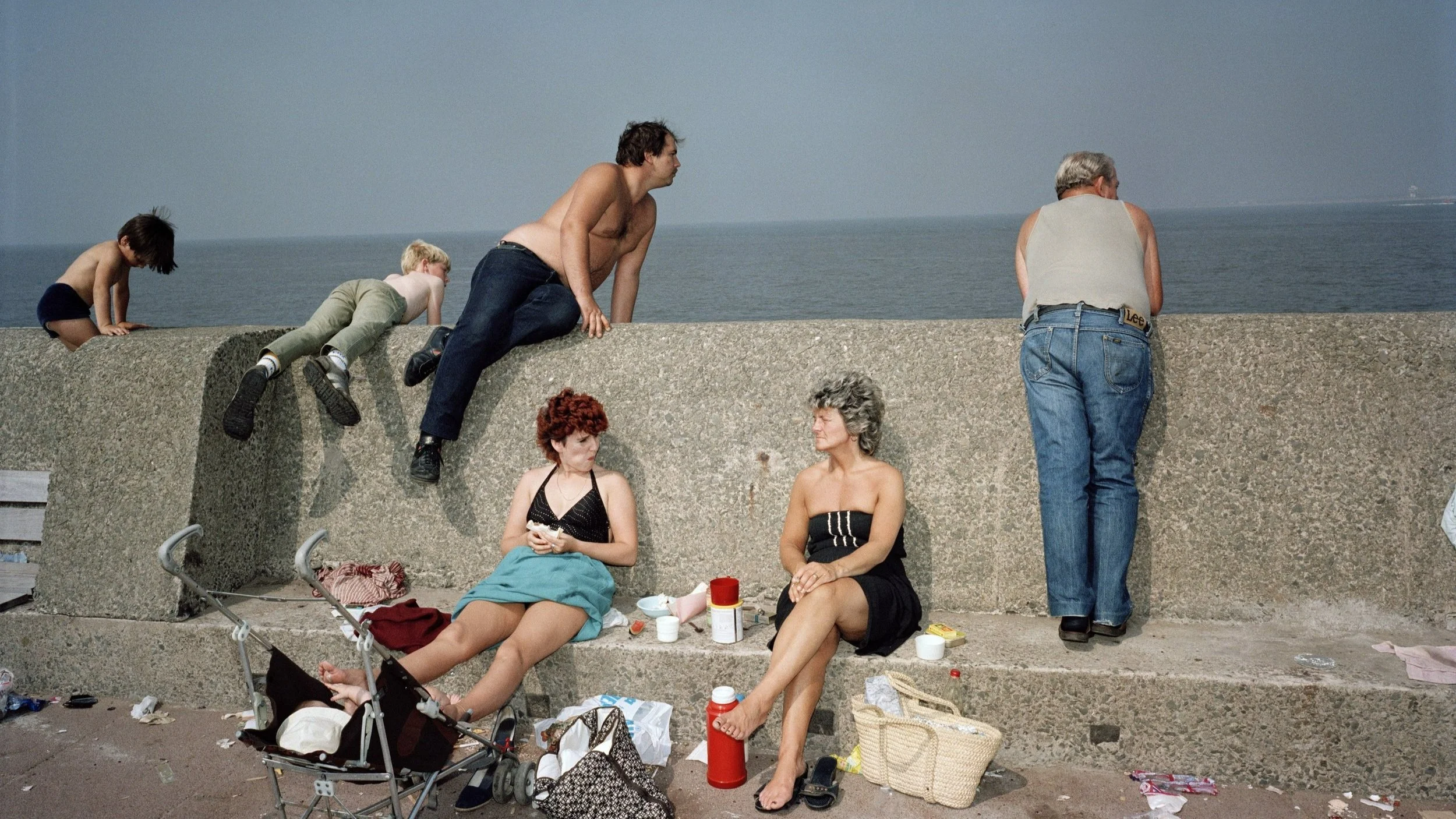I Am Martin Parr
The work of the acclaimed and controversial English photographer is the focus of Lee Shulman’s appealing documentary.
Image courtesy of Dogwoof Releasing.
Although Lee Shulman made a music video in 2009, it would appear that this pleasing documentary is his first work for the cinema. However, he is a well-established figure in the world of photography and noted as the founder and creative director of The Anonymous Project which has published a series of books featuring vintage slides which he has collected and which were made by amateur photographers. This background makes Shulman a natural fit as director of I Am Martin Parr because Parr, now in his seventies, is a photographer whose subject matter has always been the ordinary lives of ordinary people. Most of his images capture their leisure activities and, having started off in black-and-white until switching to colour almost fifteen years later, they capture Britain's changing social history. With their particular emphasis on the working classes, they are a commentary on it too.
In some respects, Shulman's film follows what has become a standard format for most documentaries about artists. We see Parr himself still working as obsessively as ever and providing a voice-over commentary intercut with interview footage featuring his wife Suzie together with various colleagues and admirers, the latter category including such well-known figures as Grayson Perry and David Walliams. Most importantly of all, the film is brimful of illustrations of Parr’s work, a fine opportunity for viewers to assess it for themselves.
In Parr’s case making such an assessment involves defining its character as well as its quality. Parr himself talks of seeking to capture life as it is and believes that to be truthful his work must combine the comic and the tragic. Add the emphasis on those so not well off and a viewpoint that could be seen as class conscious and politically shaped and Parr’s images suggest an outlook comparable to that often found in the films of Mike Leigh. But in Parr’s case there are those who, rightly or wrongly, seem to regard the satirical element in his work as condescending and even cruel at times. Does Parr's sense of the absurd lead him into that or is that entirely a misreading? You can decide for yourselves. However, when we see his shots of people eating cheap food, the mockery present is of the food industry rather than the consumer and even then Parr’s camera finds colourful appeal in the images.
Two aspects present here mark out I Am Martin Parr as a more individual work than it might at first appear. One lies in the fact that its emphasis is much more on the art than on Parr's life. We do get some impression of his history, but there is far greater detail to be found on Wikipedia than in the film and some issues come up unexpectedly late in the day. It's natural enough that the issue of Parr's health only emerges then since it was only in 2021 that he had a significant cancer scare, but it is also at this stage that we get a belated description of the aims behind the Foundation which he had set up in Bristol in 2011 and similarly only then does the film touch on Parr’s numerous acclaimed books which have long been as much a part of his working life as his exhibitions are. In keeping with this loose format, despite having heard from Parr’s wife early on in the film it is only near its close that she describes their first meeting. But the fact that I Am Martin Parr is so compact (it runs for a mere 66 minutes) ensures that we are in any case held throughout.
Then there’s the other interesting rare feature to be found here. The construction of the piece is such that it frequently intercuts shots of Martin Parr revisiting places from his old history with photographs that he took in those very spots years ago. These recent shots are of course ones which were taken by Maxime Kathari under Lee Shulman’s direction but quite often they include footage which gives the impression of echoing the character of Parr’s own photographs. This is nowhere more noticeable then in the striking images taken in Blackpool’s Tower Ballroom featuring elderly couples and such touches play as a built-in homage to Parr’s own work.
Ultimately, though, the value of I Am Martin Parr lies first and foremost in the opportunity that it affords its audience to view on the big screen the work of a major British photographer revered by many in France and described by Grayson Perry as having his own way of seeing. It is good too to have Parr speaking in person about his work and about the way in which he still feels the need to keep going. He may express the view that the idea of obtaining a perfect picture is in reality illusory, but in his eighth decade he still regularly sets out in the belief that this could be the day.
MANSEL STIMPSON
Featuring Martin Parr, Suzie Mitchell Parr, Charlotte King, Louis Little, Harry Gruyaert, François Hébel, Grayson Perry, David Walliams, Kavi Pujara, Bruce Gilden, Mimi Mollica, Clementine de la Féronnière.
Dir Lee Shulman, Pro Emmanuelle Lepers, Ph Maxime Kathari, Ed Raphaëlle Martin-Holger, Music Erik Wedin.
Haut et Court Doc-Dogwoof Releasing.
66 mins. France. 2024. UK Rel: 21 February 2025. Cert. 12A.


